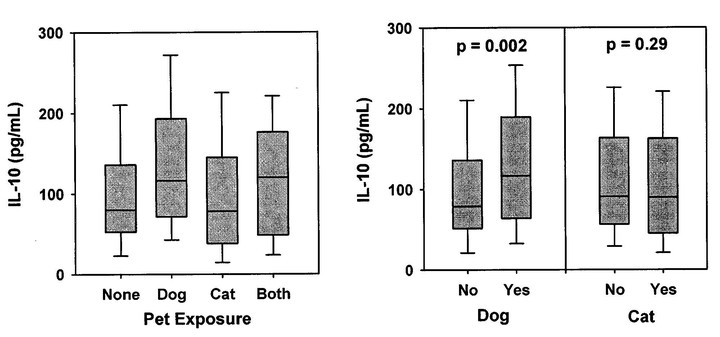
Abstract
BACKGROUND: Exposure to furred pets might confer protection against the development of allergic sensitization through a mechanism that is incompletely understood. OBJECTIVE: The objective of this study was to determine the effects of pet exposure and genotype on immunologic development and the incidence of atopic markers and diseases in the first year of life. METHODS: Pet exposure in the home was compared with cytokine secretion patterns (mitogen-stimulated mononuclear cells at birth and age 1 year) and indicators of atopy (allergen-specific and total IgE, eosinophilia, food allergy, atopic dermatitis) in 285 infants. Interactions with genotype at the CD14 locus were also evaluated in the data analyses. RESULTS: Exposure to dogs was associated with reduced allergen sensitization (19% vs 33%, P =.020) and atopic dermatitis (30% vs 51%, P <.001). The risk for atopic dermatitis was further influenced by genotype at the CD14 locus (P =.006), even after adjusting for exposure to dogs (P =.003). Furthermore, infants with the genotype -159TT were less likely to develop atopic dermatitis if they were exposed to a dog (5% vs 43%, P =.04). Last, dog exposure was associated with increased IL-10 (117 vs 79 pg/mL, P =.002) and IL-13 (280 vs 226 pg/mL, P =.013) responses at age 1 year. CONCLUSIONS: Having a dog in infancy is associated with higher IL-10 and IL-13 cytokine secretion profiles and reduced allergic sensitization and atopic dermatitis. These findings suggest that postnatal exposure to dogs can influence immune development in a genotype-specific fashion and thereby attenuate the development of atopy in at-risk children.